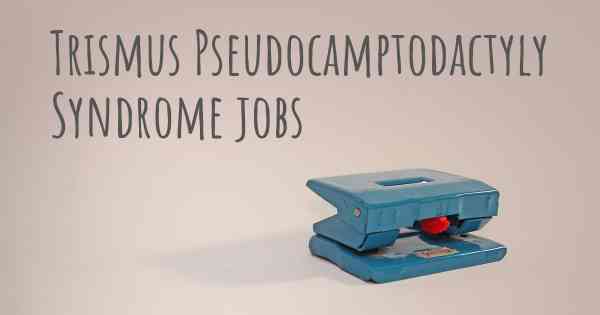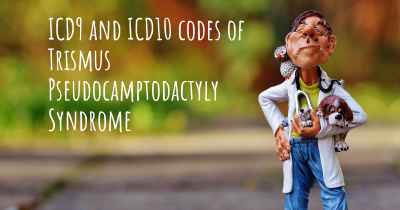Can people with Trismus Pseudocamptodactyly Syndrome work? What kind of work can they perform?
See how people with experience in Trismus Pseudocamptodactyly Syndrome give their opinion about whether people with Trismus Pseudocamptodactyly Syndrome can work and what kind of jobs are more appropriated for people with Trismus Pseudocamptodactyly Syndrome

Trismus Pseudocamptodactyly Syndrome (TPS) is a rare genetic disorder that affects the muscles and joints, causing limitations in movement and function. People with TPS may experience difficulties in opening their mouth fully (trismus) and have a fixed flexion deformity of the fingers (pseudocamptodactyly). These physical impairments can pose challenges in various aspects of life, including employment.
However, it is important to note that the ability to work and the type of work a person with TPS can perform greatly depends on the severity of their symptoms and the specific limitations they face. Each individual with TPS may have a unique set of abilities and challenges, so it is crucial to consider their specific circumstances when discussing employment opportunities.
Despite the physical limitations associated with TPS, many individuals can still engage in meaningful work and contribute to the workforce. With appropriate accommodations and support, individuals with TPS can find employment in various fields that align with their abilities and interests.
1. Office-based jobs: People with TPS can excel in office-based roles that require minimal physical exertion. These may include administrative tasks, data entry, customer service, bookkeeping, or other desk-oriented jobs. With the use of assistive devices or modifications to their workstations, individuals with TPS can effectively perform these tasks.
2. Creative and artistic fields: Many individuals with TPS possess exceptional creativity and artistic talents. They can pursue careers in graphic design, illustration, writing, photography, or other artistic endeavors that do not heavily rely on physical dexterity. Adaptive tools and technologies can be utilized to accommodate their specific needs.
3. Information technology (IT): The IT industry offers a wide range of opportunities for individuals with TPS. Roles such as software development, quality assurance, technical support, or project management can be suitable options. With the ability to work remotely and the availability of assistive technologies, individuals with TPS can thrive in this field.
4. Research and analysis: Individuals with TPS often possess strong analytical skills and attention to detail. They can pursue careers in research, data analysis, market research, or scientific fields where their intellectual abilities can be utilized effectively.
5. Entrepreneurship: Some individuals with TPS may choose to start their own businesses or work as freelancers. This allows them to have more control over their work environment and schedule, making it easier to accommodate their specific needs.
It is important for individuals with TPS to communicate their needs and limitations to potential employers, as reasonable accommodations can often be made to enable them to perform their job effectively. Employers should be open to providing necessary modifications, assistive devices, flexible schedules, or other accommodations to create an inclusive and accessible work environment.
Ultimately, the type of work a person with TPS can perform depends on their individual abilities, interests, and the accommodations available to them. With the right support and understanding, individuals with TPS can lead fulfilling and productive professional lives.
Posted Dec 20, 2017 by Crystala 700








